 |
Phonola 599R Italy - 1951 |
 |
|
|
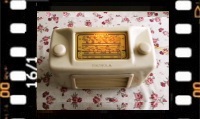 |
Italiano
|
|||||
|
|
|||||||
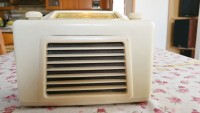 |
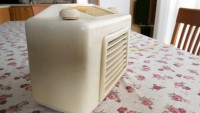 |
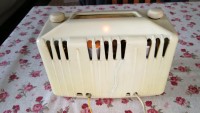 |
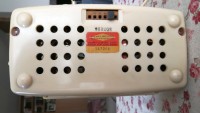 |
||||
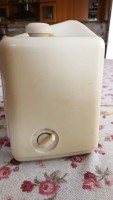 |
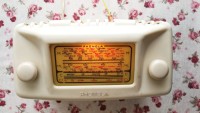 |
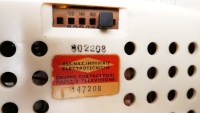 |
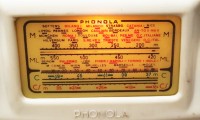 |
||||
|
Ricevitore supereterodina con ricezione delle Onde Medie suddivise in due segmenti (M: 520-720 KHz e ML: 680-1650 kHz) e due gamme di Onde Corte (C: 6-8,1 MHz e CS: 7,8-18,1 MHz). Le quattro gamme sono selezionabili tramite una manopola posta sul lato destro che aziona un commutatore. La 599R è una radio molto compatta prodotta dalla Phonola nei primi anni '50 che impiega cinque valvole della serie Rimlock: UCH42 come convertitrice, UF41 nello stadio di Frequenza Intermedia, la UBC41 come rivelatrice e preamplificatrice di bassa frequenza, la UL41 come finale audio e la UY41 come raddrizzatrice. L'alimentazione avviene tramite la rete elettrica (125 - 140 - 160 - 220Vac) e utilizza un autotrasformatore con un capo della rete elettrica collegato al telaio, per tale motivo è assolutamente necessario staccare sempre la spina quando si mette mano al circuito elettrico. I filamenti delle cinque valvole sono collegati in serie a una presa dell'autotrasformatore che fornisce 113 Vac. La lampadina che illumina la scala parlante è del tipo a vite E10 e per l'accesione utilizza l'apposita presa da 6.3 V 0.2 A. sull'avvolgimento dell'autotrasformatore Il Mobile è realizzato con un vecchio tipo di materia plastica che diventa fragile con il tempo. La scala parlante è posta sulla parte superiore del mobiletto con a destra la manopola della sintonia e alla sinistra quella del Volume con interruttore di accensione. La griglia che copre l'altoparlante (magnetico da 10 cm) è sul frontale. Nel retro del mobile in basso ci sono la presa d'antenna e di terra. La presa d'antenna è munita di un deviatore: se nessuno spinotto è inserito l'antenna è collegata alla rete elettrica tramite un condensatore da 500 pF 3000 V di isolamento. Il cambiotensione è posto nel coperchio inferiore del mobiletto. Le dimensioni sono: 21 x 14 x 11 cm. Aneddoto: Questo ricevitore era stato utilizzato nella cucina della mia famiglia dalla seconda metà degli anni '50 fino all'inizio degli anni '60 quando mio padre acquistò una radio nuova. La piccola vecchia Phonola l'avevo subito requisita e installata nella mia cameretta, e dopo averla collegata a una antenna a L rovesciata stesa sul tetto della casa l'ho utilizzata per ascoltare i radioamatori sulle Onde Corte nelle gamme dei 7 e dei 14 MHz (all'epoca gli Ham trasmettevano in Ampiezza Modulata). Con l'aiuto di Raimondo I1TI che mi aveva regalato una valvola 807, e con il supporto di alcuni altri radioamatori della mia città amici di mio padre, sul vecchio chassis di una radio trovata da un robivecchi, riuscii ad assemblare un trasmettitore sui 7 MHz con il quale feci il mio primo collegamento radio. All'epoca, 1961, avevo tredici anni, la mia voce tradì immediatamente la mia età e fui redarguito, ma altri radioamatori mi incoraggiarono e usai ancora il trasmettitore. Più avanti studiai Radiotecnica, mi diplomai all'Istituto Tecnico della mia città e ottenni la licenza di radioamatore. © IK3HIA - 2005 |
|||||||
|
|
|||||||
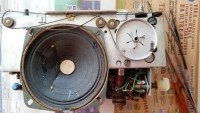 |
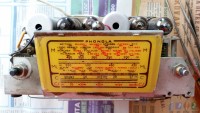 |
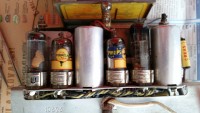 |
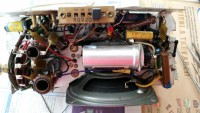 |
||||
Superheterodyne receiver with reception of Medium Waves divided into two segments (M: 520-720 KHz and ML: 680-1650 kHz) and two ranges of Short Waves (C: 6-8.1 MHz and CS: 7.8-18.1 MHz). The four ranges are selectable via a knob on the right side that operates a switch. The 599R is a very compact radio produced by Phonola in the early 1950s that uses five Rimlock series valves: UCH42 as a converter, UF41 in the Intermediate Frequency stage, the UBC41 as a low frequency detector and preamplifier, the UL41 as an audio amplifier and the UY41 as a rectifier. The power supply is via the mains (125 - 140 - 160 - 220Vac) and uses an autotransformer with one end of the mains connected to the chassis, for this reason it is absolutely necessary to always unplug the appliance when working on the electrical circuit. The filaments of the five tubes are connected in series to a tap of the autotransformer that supplies 113 Vac. The light bulb that illuminates the dial is an E10 screw type and for the heather it uses a tap of 6.3 V 0.2 A in the autotransformer winding. The cabinet is made of an old type of plastic material that becomes fragile over time. The dial is located on the top of the cabinet with the tuning knob on the right and the volume knob with power switch on the left. The grille covering the speaker (3.9 inch magnetic) is on the front. At the back of the cabinet at the bottom there are the antenna and ground sockets. The antenna socket is equipped with a switch: if no plug is inserted the antenna is connected to the mains via a 500 pF 3000 V insulation capacitor. The voltage switch is located in the lower cover of the cabinet. The dimensions are: 8.3 x 5.5 x 4.3 inch. Anecdote: This receiver had been used in my family's kitchen from the late 1950s until the early 1960s, when my father purchased a new radio. I immediately requisitioned the small old Phonola and installed it in my bedroom. After connecting it to an inverted L-shaped antenna strung across the roof of the house, I used it to listen to amateur radio operators on the 7 and 14 MHz shortwave bands (at the time, Ham radios transmitted in Amplitude Modulation). With the help of Raimondo I1TI, who had given me an 807 tube, and with the support of some other amateur radio operators in my hometown who were friends of my father, I managed to assemble a 7 MHz transmitter using the old chassis of a radio found at a junk dealer, and made my first radio contact. At the time, 1961, I was thirteen. My voice immediately betrayed my age, and I was scolded, but other radio amateurs encouraged me, and I continued to use the transmitter. Later, I studied radio engineering, graduated from the technical institute in my hometown, and obtained my amateur radio license. © IK3HIA - 2005 |
|||||||
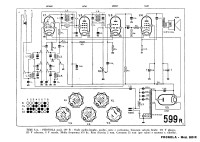 |
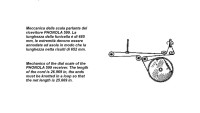 |
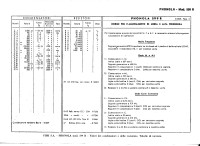 |
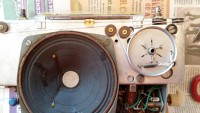 |
||||
|
Back to top of page
|
|||||||
| Return to: ik3hia home page |
|
Back to: old tube radio |